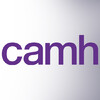
Online Interventions for Gamblers With and Without Co-occurring Problem Drinking
GamblingAlcohol ConsumptionMany problem gamblers are also problem drinkers,with lifetime prevalence in nationally representative samples ranging from 45% to 73%. Heavy drinking often occurs while problem gamblers are engaging in gambling activities, resulting in increased risky gambling behaviour. Further, co-occurring problem drinking negatively impacts on the treatment outcomes of problem gamblers. Thus, targeting problem drinking among problem gamblers may have the dual benefits of reducing both the problem drinking itself, and of acting as a mediator for reductions in problem gambling behaviour. The present study seeks to determine whether providing simultaneous access to help for gambling and drinking is of benefit for those with these co-occurring problems.

Alcohol and Immune Response
Alcohol DrinkingAlcohol; Harmful UseThis study investigates how alcohol affects the immune system and behavior in healthy adults. The study also will examine how an individual's typical drinking habits may affect the immune system's response to alcohol.

Occupational Distress in Doctors: The Effect of an Induction Programme
BurnoutProfessional7 moreBackground: Over 39% of approximately 3,000 doctors (The British Medical Association quarterly survey, 2015) admitted to frequently feeling drained, exhausted, overloaded, tired, low and lacking energy. Such occupational distress may link to psychological and physical difficulties in doctors and have negative outcomes for organization and patients. The aim of the current study is to investigate the impact of an induction programme on occupational distress of doctors. Methods/design: Doctors will be invited to take part in an online research. Participants will be randomly assigned to the experimental and control groups. Participants in the experimental groups will complete one of the induction topics (about stress at work). Before and after an induction programme participants will be asked to fill in an online survey about their current occupational distress and organizational well-being. Discussion: The investigators expect that doctors' psychological, physiological and organizational well-being will improve after an induction programme which should serve as a resource for better doctor's own health understanding.

Brain Functional Connectivity in Alcohol Use Disorder
Alcohol Use DisorderDue to the relapsing nature of alcoholism, excessive alcohol consumption represents a significant cost to US society ($249 billion in 20101). About 64% of those entering treatment will relapse within one year. New interventions targeting the underlying brain biomarkers of relapse vulnerability hold significant promise in reducing this critical public health problem. Using resting functional magnetic resonance imaging (fMRI) we have identified brain biomarkers that support long-term abstinence and brain biomarkers that predict relapse. Our data point to specific brain biomarkers that index higher relapse vulnerability at 11 weeks of abstinence. Many individuals, however, have already relapsed by this time. It is unknown whether these biomarkers can be identified earlier during the recovery period. We need to investigate whether this biomarker of relapse vulnerability can be identified during earlier stages of abstinence. Earlier identification of this biomarker will give valuable information for timely targeted interventions (e.g. closer monitoring, longer stay in treatment program, neuromodulation), increasing the chances of maintaining abstinence. The overall objective of this study is to identify biomarkers of relapse during early abstinence (2-3 weeks of abstinence). A secondary objective is to evaluate whether non-imaging measures such as craving6 and executive function7 add value to prediction models. Findings from this proposal will provide insight into the neurobiology of relapse vulnerability that will inform new treatment strategies needed to improve treatment outcome.

Alcohol's Impact on Inflammatory Markers in HIV Disease - Russia ARCH Cohort
HIV InfectionAlcohol UseThe purpose of this study is to assess the longitudinal association between alcohol consumption and biomarkers of microbial translocation (sCD14) and inflammation/altered coagulation (IL-6/D-dimer); to establish a cohort of HIV-infected Russian drinkers; and to establish a sample repository.

The Role of Dopaminergic and Glutamatergic Neurotransmission for Dysfunctional Learning in Alcohol...
Alcohol Use DisorderThe aim of this project is to assess reward- based learning behavior and its association with alterations in dopaminergic and glutamatergic transmission in detoxified alcohol-dependent patients and matched controls. The investigators will explore how these alterations interact with clinical and psychosocial factors which can modify the relapse risk and learning deficits. Patients will be detoxified in an inpatient setting. Clinical assessments, behavioral paradigms of learning and brain imaging will be carried out within at least 4 half- lives after any psychotropic medication. The investigators will implement and apply functional imaging paradigms assessing Pavlovian-to-instrumental transfer and reversal learning tasks and associate model parameters of learning with alcohol craving, intake and prospective relapse risk. In this project, the impact of the dopamine x glutamate interaction on learning deficits and consecutive relapse probability is targeted with [18F]fallypride PET and the measurement of absolute concentrations of glutamate with magnetic resonance spectroscopy (MRS).

The Tailgate Study: A Pilot Study Measuring the Impact of Acute Alcohol Intake on Intrahepatic Lipid...
ObesityCollege drinking associated with sporting events is characterized by excess alcohol, along with food intake, over the duration of hours has the potential to cause a build up of fat in the liver. Fatty liver can increase blood glucose concentrations leading to a prediabetes like state. The present study will determine how overweight men respond to the over-consumption of alcohol/food to identify which characteristics might protect some men from fatty liver, while others might be more susceptible to this condition. The goal of this work is to determine the direct impact of alcohol/food intake to cause acute fatty liver through the stimulation of de novo lipogenesis in 20 overweight, healthy men. Understanding individual susceptibility to alcohol-induced fatty liver will aid in the development of strategies designed to help people mitigate these risks. Hypothesis is that 5h excess consumption of alcohol and food will increase liver triglycerides by 4% or more, in comparison to fasting state.

Reducing Driving Offenses of Adolescent Drinkers
Alcohol ConsumptionTo determine the effectiveness of four group session of motivational counseling plus six hours of direct observations of the emergency department trauma services in comparison to four group session and six hours of community volunteering and also in comparison to four hours of education and 16 hours of community volunteering in reducing alcohol use and high risk driving behaviors and offenses among court referred 16-20 year old drivers.

Telephone and Mail Intervention for Alcohol Use Disorders
Alcohol Use DisordersRandomized controlled trial and benefit-cost study of a telephone and mail intervention for non-treatment-seeking primary care patients with alcohol abuse or dependence

Role of Dopamine in Response to Alcohol
Alcohol ConsumptionThis study will examine the role of the brain chemical dopamine in people's response to alcohol consumption. Dopamine is thought to influence whether people have a strong or weak response to alcohol and how pleasurable that response is. The findings of this study may shed light on why some people are at higher risk of developing problem drinking behaviors. Healthy normal volunteers between 21 and 25 years of age who have never had a serious problem with alcohol abuse or drug abuse may be eligible for this study. Candidates will be screened with a medical history and physical examination, and will be interviewed about their smoking and drinking behaviors. Participants will undergo test procedures on two separate days, as follows: Test Day 1 Upon arrival at the Clinical Center, participants will take a breathalyzer test for alcohol and provide a urine sample for a drug screen. Women will also have a urine pregnancy test. They will then lie on a hospital bed and two intravenous catheters (IV lines) will be placed, one into each arm. One line will be used to collect blood samples during the test session; the other will be used to infuse alcohol into the bloodstream. The alcohol will rapidly increase the blood alcohol level to between 0.06 and 0.08 grams per deciliter. (0.08 g/dL is the level at which a person is charge with driving under the influence of alcohol in all States.) Before, during, and after the infusion, subjects will be asked about their feelings in response to the alcohol, such as confusion, elation, level of discomfort or dizziness, ability to concentrate, and so forth. At 35 and 60 minutes after the infusion begins, subjects will take a body sway test. This involves standing on a machine to determine how the alcohol has affected the sense of balance. Subjects will then relax in the clinic for a few hours. During this time, a blood sample will be collected and a questionnaire will be given hourly until the blood alcohol level has gone down to 0.02 g/dL. When the alcohol level has declined to 0.02 g/dL (usually 3 to 4 hours after the infusion), the subject will be sent home in a taxi. Test Day 2 Participants will again take a breathalyzer test for alcohol and provide a urine sample for drug screen and, for women, a pregnancy test. Subjects will lie on a hospital bed and three IV lines will be inserted, one to draw blood samples, one to infuse alcohol, and one to give raclopride, a radioactive substance used for positron emission tomography (PET) scanning. For PET, the subject lies on a table in the scanner with a mask placed over his or her head to help hold the head still during the scan. After a brief scan to adjust the machine, a small amount of radioactive water (O-15 water) is injected through the IV line and a series of pictures is taken over a period of about 1 minute. These images show how the radioactive water distributes in the brain, indicating blood flow. After the water scan, raclopride is given through the IV line and more pictures of the brain are taken over the next 2 hours. Blood samples are collected during and after the raclopride scan. During this procedure, subjects are asked the same questions about their feelings in response to the alcohol as they did during the earlier session. After he scans, they will be monitored in the clinic with hourly blood tests and questionnaires until the blood alcohol concentration decreases to 0.02 g/dL and will then be sent home in a taxi.
